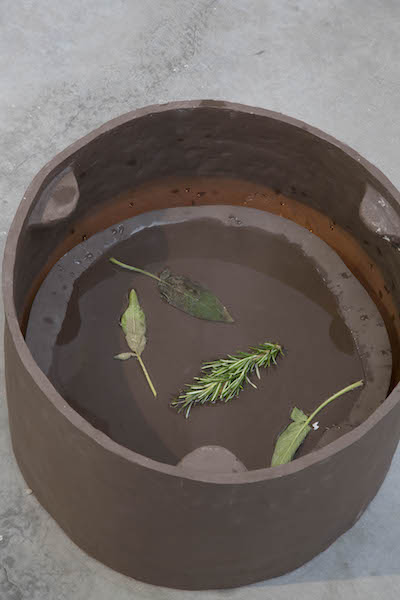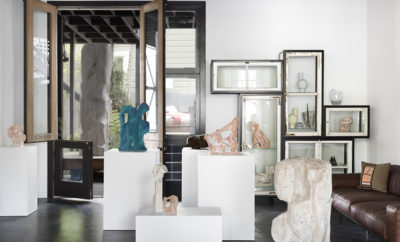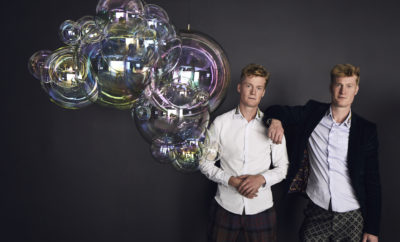 Kostas Lambridis, "The Elemental Cabinet" (2017). Photo by Robert Anderiesen
Kostas Lambridis, "The Elemental Cabinet" (2017). Photo by Robert Anderiesen
Exhibition
The Graduates: Carpenters Workshop Gallery Shines a Spotlight on Europe’s Emerging Talent
In a special exhibition for London Design Week, Carpenters Workshop Gallery has collaborated with trend forecaster extraordinaire Li Edelkoort to highlight the work of fourteen young, emerging designers from across Europe. The resulting show, The Graduate(s): European Design Talent Selected by Lidewij Edelkoort, brings together a diverse cast of objects united by an exploration of historicism, authenticity, and identity, all while looking toward the future and deftly avoiding any lapse into anachronism. The works featured combine more traditional materials—wood, earthenware, concrete, and organic fibers like flax and linen—with technological innovations and contemporary sensibilities, creating a dynamic that Li refers to as “post-fossil.” We took a moment to ask Li about the show, its unique aesthetic, and her favorite pieces.
Josefa Westerman/MODERN Magazine: I understand you surveyed recent graduates from more than fifty design schools. Could you elaborate on your selection process, and what qualities were you precisely looking for?
Li Edelkoort: Together with our assistants we scoured over fifty design schools all over Europe, looking at their best graduates from this year but also from the past couple of years. In some cases we asked academics and designer friends to suggest students and interns they believed were important individuals to note. The selection was not an easy process since the graduates needed to show promise as well as a visible talent for material development. They require a will to achieve and thrive. To be chosen for Carpenters Workshop Gallery implies that their works can be considered as promising examples of autonomous design.
JW: It’s clear that the selected designers share motifs of identity, primality, and historicism, though in a way that is centered around the “now.” Would you say that you were aware of this dynamic while making your selections or did this theme emerge naturally? That is to say: which came first, the chicken or the egg?
LE: We did enter the selection process with an open mind, but early on, it became clear that the post-fossil mentality was strongest and continues as a major movement. By choosing the best autonomous design pieces first, we were able to see an organic and archaeological picture emerging.
JW: Lastly, do you have any personal favorite works from the exhibition?
LE: The accumulation of shapes and materials in Kostas Lambridis’ spectacular Elemental Cabinet is quite monumental. The Greek-born designer is a protégé of Nacho Carbonell, and one can see the love for sculptural shapes that they both share. Kostas’ early work at Design Academy Eindhoven was already very promising and so I’m intrigued to see what he will do next! I also like the Dancers by Aurelie Hoegy because of their wild expressionism and tactile fibrous beauty – they truly seem to be animated.













